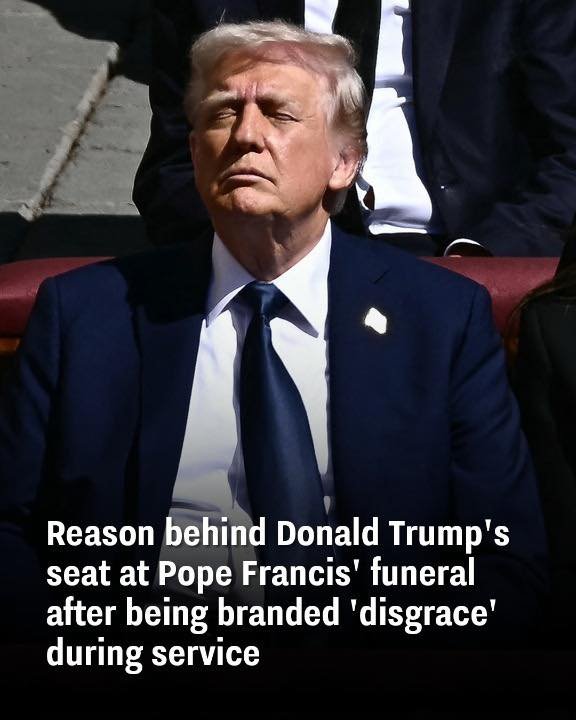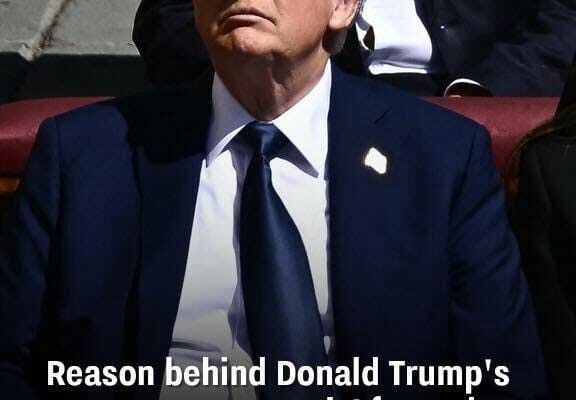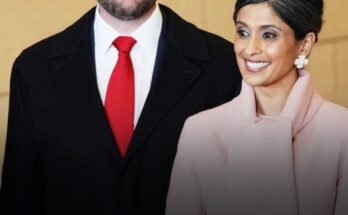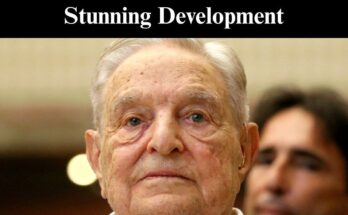Trump’s Unexpected Front-Row Position at Pope Francis’ Funeral Sparks Global Controversy

The article you shared highlights an intriguing turn of events at Pope Francis’ funeral, where US President Donald Trump was unexpectedly granted a coveted front-row seat, despite earlier reports indicating he would be relegated to a less prominent position due to traditional Vatican seating protocols. The funeral itself, held on April 28, 2025, for the late Pope Francis, who passed away on April 21, drew a massive crowd and was attended by several world leaders.
Vatican seating arrangements for such events follow a strict, centuries-old hierarchy, with monarchs traditionally placed at the front, followed by non-Catholic royals, and then heads of state in the third tier. This diplomatic protocol is a careful balance of tradition, politics, and the complex relationships between world leaders.
The surprise regarding President Trump’s seating arrangement has stirred discussions, especially considering his known discomfort with not being placed in a prominent position at international events. The Vatican’s decision to move Trump to the front row appears to have been a strategic diplomatic maneuver, likely reflecting broader political considerations and careful management of delicate international relations. Cardinal Vincent Nichols and other experts reveal that Vatican officials take into account numerous factors, including historical rivalries, personal dynamics between leaders, and the ever-important “big egos,” ensuring that the seating chart avoids potential diplomatic tensions.
This situation also connects to past controversies, such as Trump’s public dissatisfaction with his seating at Queen Elizabeth II’s funeral in 2022, highlighting his sensitivity to diplomatic positioning. The article underscores how the seating arrangements at such high-profile funerals are not merely ceremonial but are intertwined with complex geopolitical signals.
The controversy surrounding President Trump’s attendance at Pope Francis’ funeral has taken an interesting turn, particularly regarding his public criticism of seating arrangements and, most notably, his attire. As discussed in the article, Trump’s social media posts criticizing his “third-tier” placement at the funeral were forceful and pointed, accusing “weak leadership” of undermining American prestige and emphasizing the importance of “location” in both politics and real estate. His remarks struck a chord with diplomatic experts and analysts, highlighting his ongoing sensitivity to symbolic markers of status and positioning at international events.
Dr. Elizabeth Morgan’s comment that funeral seating arrangements are based on objective criteria such as constitutional position and length of service sheds light on the complexity of diplomatic protocols. However, Trump’s comments reflect his well-known tendency to place significant value on these symbolic aspects, which were evident throughout his presidency. He has long been noted for his concerns about status indicators, whether it be in terms of handshakes, chair sizes, or seating positions—each of which serves as a visible representation of power and respect in international diplomacy.
This focus on symbolic status has now extended to the Vatican’s handling of Trump’s seating, with speculation that the Holy See might have made adjustments to avoid exacerbating tensions or creating unnecessary controversy. Diplomatic insiders have suggested that, aware of Trump’s sensitivities, Vatican officials could have been mindful of his past criticisms when determining his seating position. Former Ambassador Francis Rooney also noted the Vatican’s skill in balancing diplomatic sensitivities while adhering to established protocols, which suggests that any adjustments made to Trump’s seating were likely calculated and measured.
However, the more immediate and widespread criticism stemming from Trump’s appearance at the funeral concerns his attire. In what is now being called “the blue suit incident,” President Trump’s decision to wear a vibrant navy blue suit and bright blue tie—rather than the traditional black mourning attire—has drawn significant commentary. This attire choice stood out in stark contrast to the sea of black-clad world leaders and dignitaries who followed the Vatican’s explicit dress code for papal funerals.
The Vatican’s established guidelines for funeral attire are clear: attendees should wear black suits with black ties, or their country’s traditional mourning attire if it incorporates mourning elements. This dress code serves as a gesture of respect for the deceased pontiff and the sacred nature of the event. Trump’s choice to wear a blue suit, despite these guidelines, has attracted widespread criticism for being a clear deviation from the expected norms.
The “blue suit incident” has become a focal point of international commentary, overshadowing the earlier controversy regarding seating. For many, it is seen as a stark visual representation of Trump’s disregard for traditional diplomatic norms. Given his earlier comments about seating arrangements, the attire choice has only added to the perception of his disinterest in adhering to established diplomatic conventions.
This situation highlights the intricate nature of international diplomacy, where symbolic gestures—whether it’s seating arrangements or attire—can carry significant weight. Both aspects of Trump’s attendance at the funeral serve as powerful reminders of the delicate balancing act required in global diplomatic relations, where adherence to tradition and protocol can often conflict with personal preferences and public perceptions.



